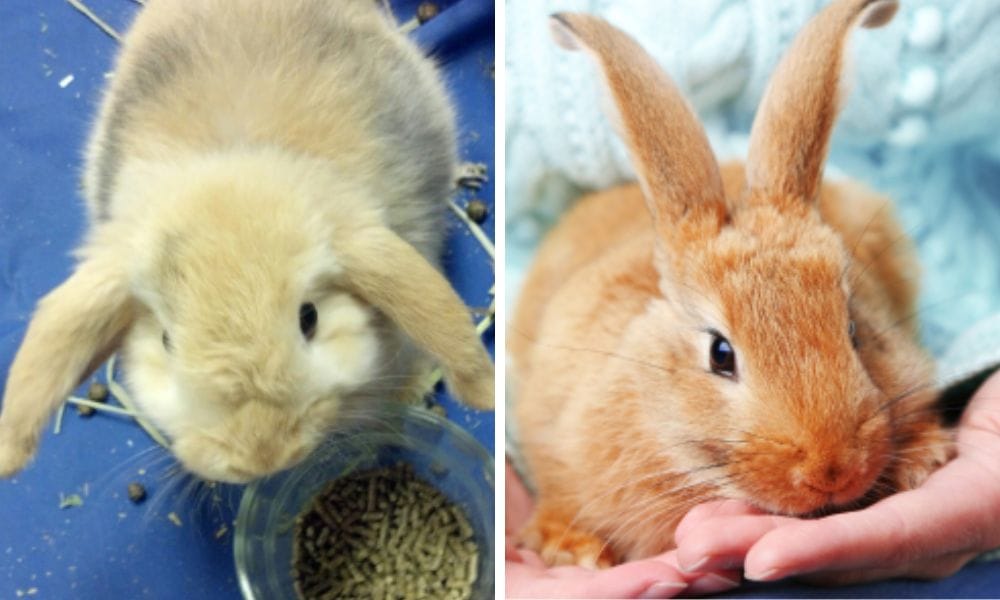Rabbit Nutrition: The Importance of Hay and the Role of Rabbit Hay Feeder
Explore how a rabbit hay feeder plays a crucial role in ensuring optimal nutrition through consistent, clean hay access for your pet rabbit.
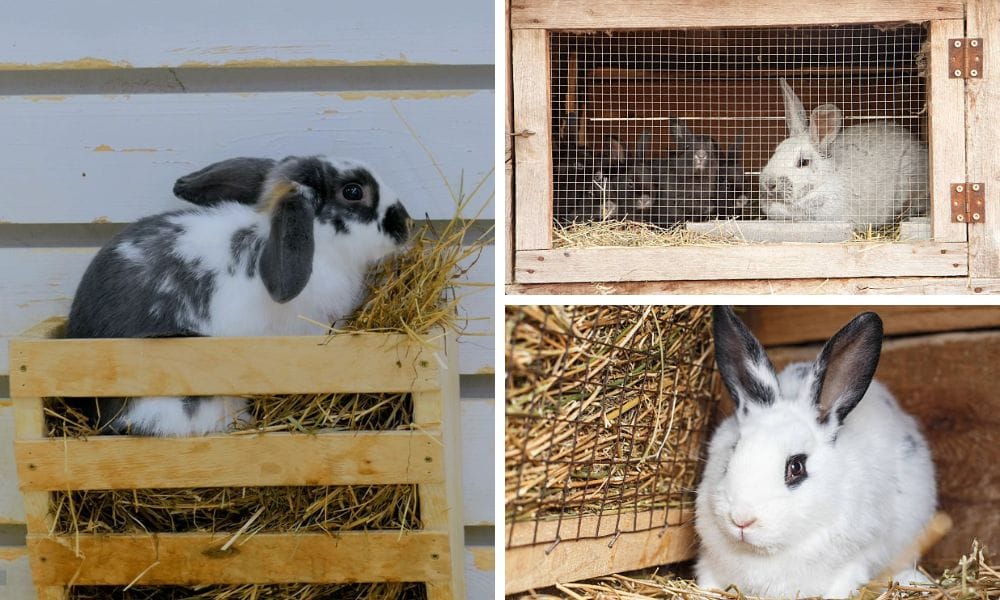
Key Takeaways:
- Hay is a crucial component of a rabbit's diet, providing essential fiber for digestive health.
- Rabbit hay feeders facilitate clean and accessible hay consumption, promoting better feeding habits.
- Choosing the right hay feeder can enhance your rabbit's well-being and reduce waste.
Rabbits are delightful companions that bring joy and happiness to our lives. As responsible pet owners, it's essential to understand the fundamentals of rabbit nutrition to keep our furry friends healthy and content. At the core of a rabbit's diet is hay, a vital source of fiber that ensures their digestive system functions correctly. But how do we ensure our bunnies have constant access to fresh hay? Enter the rabbit hay feeder, a game-changer in the world of bunny care.
Introduction to Hay in Rabbit Diet
Hay is a crucial component of a rabbit’s diet, providing essential fiber and nutrients that are vital for their overall health. Rabbits need access to plenty of hay to stay healthy, and a hay feeder can be a game-changer in managing their hay consumption. A good hay feeder should allow easy access to hay, reducing waste and mess, and encouraging your bunny to eat more hay.
Rabbits love to munch on hay, and a well-designed hay feeder can make this activity even more enjoyable for them. Hay feeders come in various types, including hanging bags, metal feeders, and wooden mangers, making it easy to find the perfect one for your bunny. Metal feeders are often strong and sturdy, which makes them durable, but this strength can also pose safety risks if not designed properly, as rigid metal parts may trap limbs or cause injuries. These feeders not only keep the hay clean and dry but also ensure that your rabbit has a constant supply of fresh hay to nibble on throughout the day. By making hay readily accessible, hay feeders encourage rabbits to eat more hay, which is essential for their digestive health and dental care.
The Vital Role of Hay in a Rabbit's Diet
Hay is not just a food item for rabbits; it’s the cornerstone of their nutrition. Providing an ample quantity of hay is crucial for maintaining a rabbit’s digestive health, as it contains the necessary fiber to prevent issues like GI stasis, a common and dangerous condition in rabbits. Rabbits naturally engage in foraging and grazing behaviors, so allowing them to eat hay from the floor can encourage these natural eating habits. Moreover, the act of chewing hay helps to keep their ever-growing teeth at the proper length, preventing dental problems that can lead to severe health issues. Ensuring that hay is eaten in a manner that aligns with their natural feeding behaviors can further promote their overall well-being.
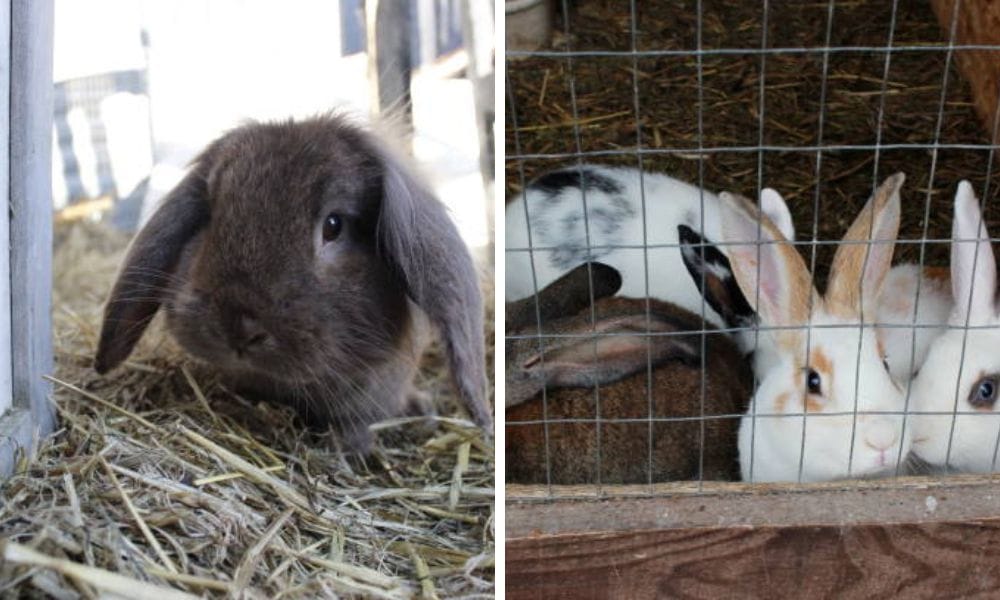
How Rabbit Hay Feeders Revolutionize Feeding
Rabbit hay feeders are ingeniously designed to hold a substantial amount of hay, keeping it clean, dry, and accessible to your bunny throughout the day. By using a hay feeder, you can minimize waste, as the hay is contained and less likely to be soiled by your rabbit. A hay bag is another great option for feeding, as hay bags are designed to hang and include multiple holes for easy feeding and storage, emphasizing convenience and functionality for pet owners. This not only ensures that your rabbit always has fresh hay to munch on but also makes your life easier by reducing the mess and the frequency of refills. However, despite these efforts, rabbits naturally tend to create a bit of a mess as they not only eat hay but also play with it, leading to a spread of hay regardless of the method of distribution.
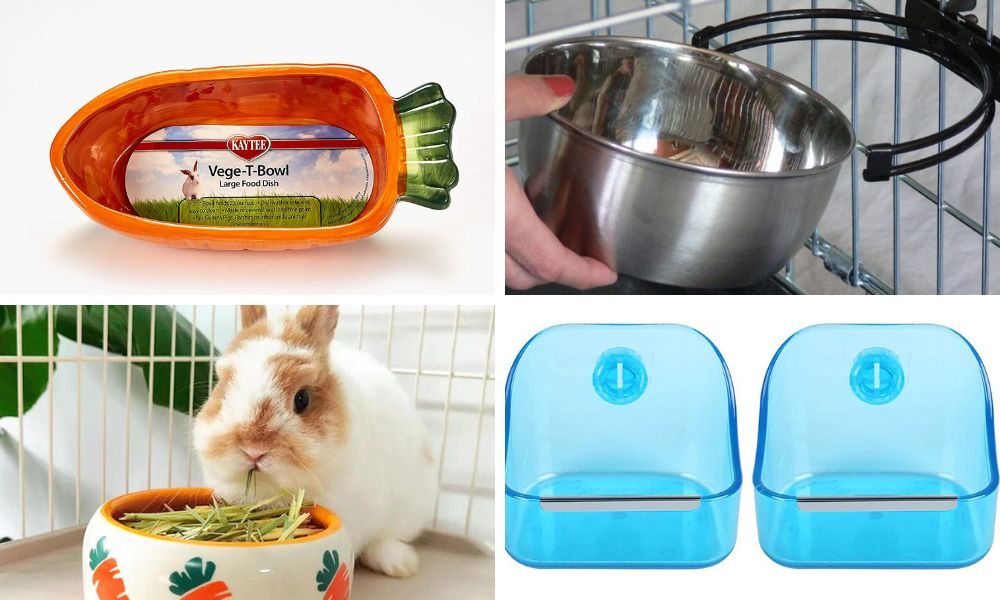
Feeding Strategies with a Hay Rack
When it comes to feeding your rabbit, using a hay rack can be a game-changer for both you and your bunny. Hay racks and hay feeders are designed to keep hay clean, dry, and easily accessible, making them the perfect addition to any rabbit enclosure. By placing a hay rack near the litter box or in a cozy corner of the cage, you create a dedicated eating area that encourages your rabbit to graze and forage just as they would in the wild. This setup not only supports your bunny’s natural instincts but also helps keep their living space tidy and organized.
One of the biggest advantages of using a hay rack is its ability to minimize mess and waste. By keeping hay off the floor, you prevent it from getting soiled or trampled, which means less cleaning for you and more fresh hay for your rabbit to enjoy. Many rabbit owners have found that hay racks are a proven way to reduce the amount of hay wasted, saving both time and money in the long run. Plus, a well-designed hay rack can help deter your bunny from chewing on wire or other parts of the cage, keeping them safe and healthy.
When choosing a hay rack, pay attention to the dimensions and design to ensure it fits perfectly in your rabbit’s enclosure and provides plenty of access to hay. Look for sturdy materials and easy-to-clean features, as these will make refilling and maintaining the feeder a breeze. We recommend refilling the hay rack regularly and even mixing in different types of hay, like timothy or orchard grass, to keep your bunny interested and prevent boredom. Creating a routine around feeding times and hay rack refills can help your rabbit feel secure and develop healthy eating habits.
In fact, many buns love the challenge and play that comes with pulling hay from a rack, turning mealtime into a fun and enriching activity. By adding a hay rack to your cart and integrating it into your rabbit’s daily routine, you’re not just keeping their food clean and dry—you’re also making their environment more engaging and supportive of their natural behaviors. It’s an easy, effective way to keep your rabbit happy, healthy, and full of energy to play and explore their enclosure. Give it a try and see the difference a hay rack can make in your bunny’s life!
Selecting the Perfect Hay Feeder for Your Bunny
When it comes to choosing a rabbit hay feeder, there’s a variety of options available. From wood to metal, the material of the feeder can impact its durability and safety. Note that some designs may pose risks by potentially trapping a rabbit's neck, leading to injuries and health complications. Wooden hay feeders, in particular, offer a natural look and can be a great addition to your bunny’s habitat. Some feeders come as a combo, with attached bowls for pellets or water, adding convenience to your rabbit’s dining experience. It is important to note the significance of avoiding designs that may restrict a rabbit's access to hay or pose potential safety hazards.
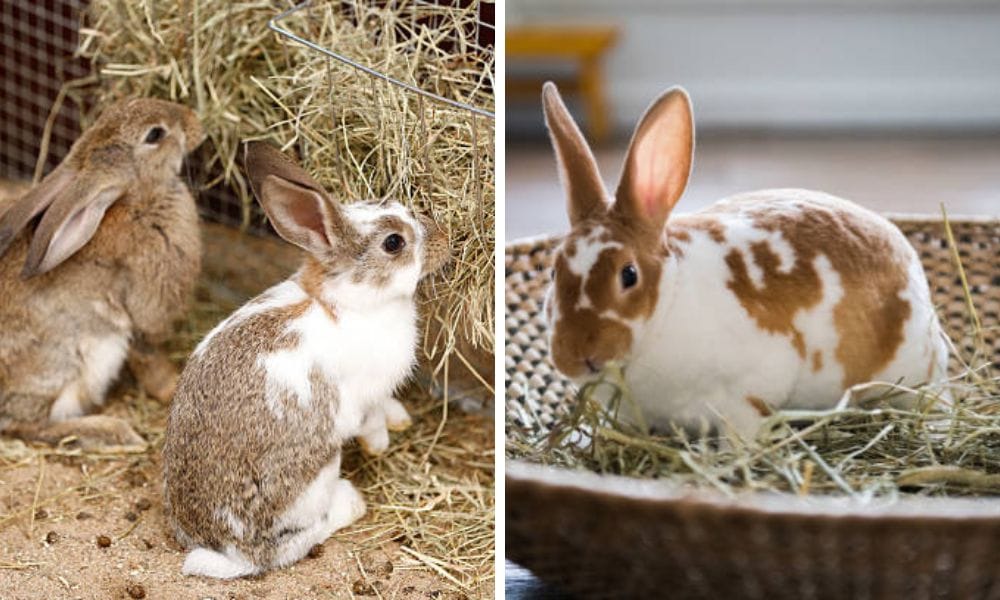
Understanding Rabbit Hay Feeder Materials
When it comes to selecting a rabbit hay feeder, the material of the feeder is just as crucial as the design. Many bunny enthusiasts love the natural aesthetic and durability of wood hay feeders. These feeders often come as a combo with spaces for hay and other food items, making them a practical addition to your rabbit’s habitat. Wood feeders not only look great but also ensure that your bunnies are interacting with materials that are safe and non-toxic, which is a top priority for every loving pet owner.
Providing varied food sources, including hay and grass, is essential for replicating the natural feeding behaviors of wild rabbits, leading to better mental stimulation and well-being for domestic rabbits.
However, not all wood feeders are created equal. It’s important to ensure that the wood used is untreated and free from chemicals that could harm your rabbit. Some feeders have wood that is intricately attached to metal or plastic components, which can add to the feeder’s functionality and ease of cleaning. Always check the product descriptions carefully to ensure that all the materials included in your chosen hay feeder are rabbit-friendly and designed with your bunny’s health and happiness in mind.
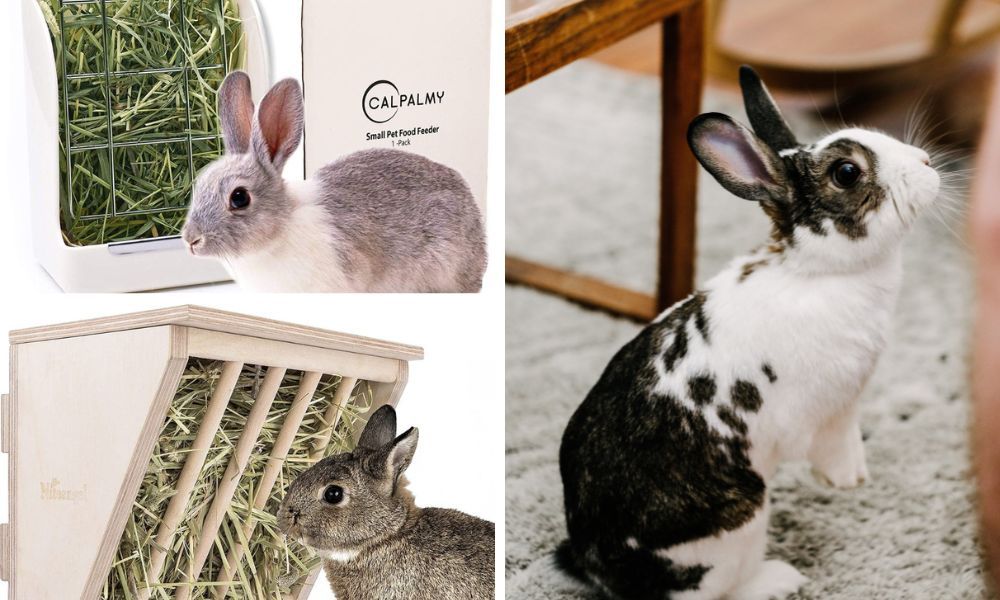
The Convenience of Hay Feeder Accessories
Adding accessories to your rabbit hay feeder can significantly enhance your bunny’s feeding experience. Imagine a feeder that not only holds hay but also has attached compartments for fresh greens or a water bottle. These combo feeders are a game-changer, allowing rabbits to have all their items in one accessible spot. This not only keeps their living space tidy but also encourages bunnies to eat a well-balanced diet since everything they need is readily available.
Moreover, accessories like hay guards or racks can help maintain the quantity and quality of hay that your rabbit consumes. By keeping the hay contained, these add-ons prevent waste and ensure that your bunny is always entering a clean and inviting feeding area. Whether it’s a simple add-on or a more complex system, the right accessories can make your rabbit hay feeder a central part of your pet’s happy and healthy lifestyle. After scatter-feeding, you can also use a tube for scatter-feeding, which provides a more challenging and enriching foraging experience by encouraging your rabbit to search for hay inside the tube. This stimulates natural searching behaviors, combats boredom, and promotes mental engagement.

The Benefits of a Well-Designed Hay Feeder
A well-designed hay feeder does more than just hold hay; it encourages your rabbit to eat more hay by making it fun and easy to access. This can be particularly beneficial for picky eaters or bunnies that need encouragement to consume the right amount of fiber. Hay has been proven to aid digestion and enhance nutrient absorption, making it essential for rabbit health. Additionally, a good hay feeder will keep the hay off the floor, which not only keeps it clean but also prevents your rabbit from ingesting harmful bacteria or contaminants.
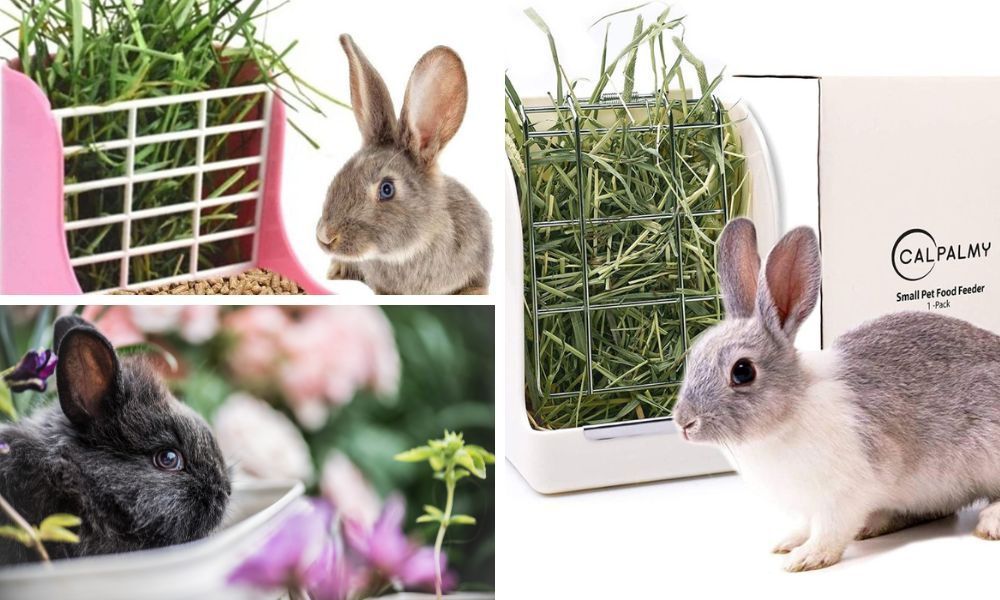
The Impact of Hay Quality and Quantity
While a rabbit hay feeder is a fantastic tool, the quality and quantity of hay you provide are just as important. Always ensure that the hay you offer is fresh, dust-free, and of high quality. The quantity should be generous, as rabbits need to have hay available at all times. During colder weather, both hay and bedding should be increased to offer more insulation, enhancing the comfort and well-being of the rabbits. A good rule of thumb is to provide a bundle of hay that’s at least the size of your rabbit every day.
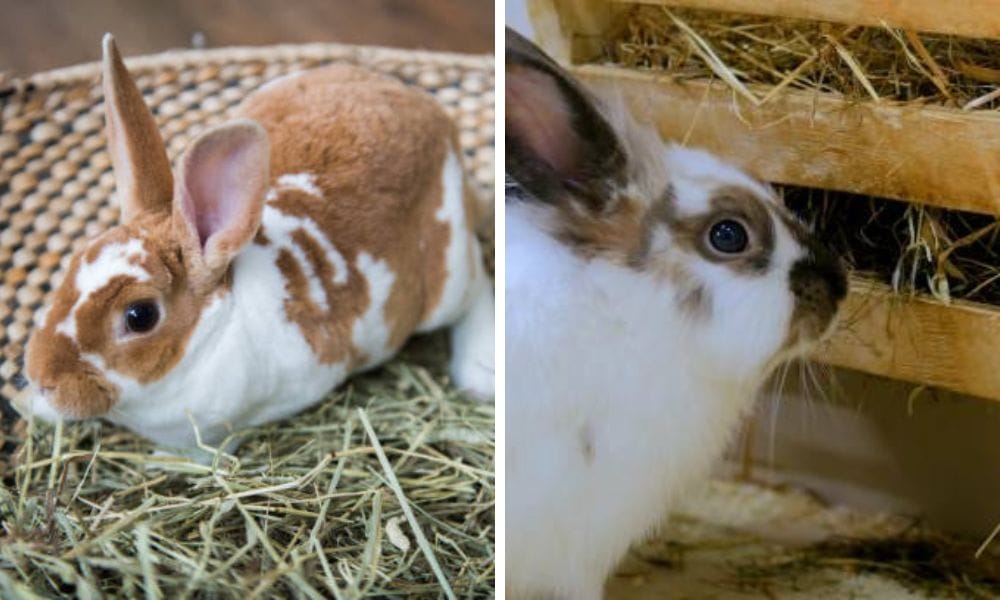
Choosing the Right Hay Storage
When choosing a hay storage solution, it’s important to consider the size of your rabbit enclosure and the amount of hay your rabbit eats. A hay feeder with a large capacity can hold plenty of hay, reducing the need for frequent refills and ensuring that your bunny always has access to fresh hay. Look for a hay feeder with sturdy construction and an easy-to-clean design to minimize mess and waste.
A hay feeder with multiple holes can provide easy access to hay, reducing the risk of head entrapment and making it easier for your rabbit to reach their food. Consider a hay feeder made from non-toxic materials, such as metal or wood, to ensure your rabbit’s safety. These materials are not only durable but also safe for your bunny to interact with, giving you peace of mind that your pet is in good hands.
Hay Storage Options: Keeping Hay Fresh and Accessible
When it comes to keeping your rabbit’s hay fresh and always ready for munching, a bit of thought into hay storage goes a long way. The perfect setup starts with choosing a dry, well-ventilated area to store your hay—this prevents mould and keeps the hay dry, ensuring your bunny always has access to high-quality food. Using airtight containers or bins with holes for airflow is a smart way to keep hay fresh while making it easy to refill your hay feeder or hay rack.
Consider the dimensions of your storage container and make sure it fits comfortably in the space near your rabbit’s cage or litter box. This makes refilling the feeder quick and easy, reducing mess and waste in your bunny’s enclosure. Placing your hay storage in an accessible location also means you’ll spend less time fussing and more time enjoying your rabbit’s company.
Regularly check your hay for any signs of mould or dampness, and replace it as needed to keep your rabbit’s food safe and appetizing. By keeping your storage area clean and dry, and by choosing a hay rack or feeder that’s easy to access and refill, you’re preventing waste and making daily care a breeze. With just a bit of planning, you can create the perfect system for keeping your rabbit’s hay fresh, accessible, and mess-free.
Integrating Hay Feeders into Your Rabbit's Environment
Integrating a hay feeder into your rabbit’s environment is simple. Place the feeder in an area that’s easily accessible to your bunny, preferably near their favorite hangout spots. This will encourage them to interact with the feeder and make hay an integral part of their daily routine. Remember to regularly clean and refill the feeder to maintain hygiene and ensure a constant supply of fresh hay. Rabbit hat feeder Keeps hay clean and dry. Many pet owners have used their litter boxes together with hay feeders to keep their habitat clean. Placing hay in the litter tray can support natural eating habits while the rabbit uses the tray, enhancing the overall foraging experience and minimizing health risks. Feel free to use rabbit hay feeder with litter box. Encouraging natural foraging behaviors results in various behavioral benefits, such as alleviating boredom and preventing negative behaviors. Hay feeder for rabbits is also suitable for guinea pigs and chinchillas.
Best Practices for Rabbit Care with Hay Feeders
To give your bunny the best care possible, it’s important to follow a few best practices when using a hay feeder. Start by providing plenty of fresh hay every day—rabbits love to eat and play, and a well-stocked feeder encourages healthy eating habits. Choose a hay feeder or hay rack that’s strong, sturdy, and designed to prevent mess and waste, making it easy to keep your rabbit’s cage clean.
Look for a feeder that’s simple to clean and refill, with holes that allow easy access to hay but are not so small that they could cause injury. Placing the hay feeder near the litter box or in a spot that encourages natural foraging will help your rabbit feel right at home. Creating a stimulating environment with scatter-feeding or a hay rack with multiple holes can turn mealtime into playtime, keeping your bunny active and engaged.
It’s also important to regularly review your rabbit’s health and adjust the feeder setup as needed. Preventing access to small holes or exposed wire will help keep your bunny safe from harm. By adding a hay feeder to your cart and using it alongside a litter box or within the cage, you’re making a strong commitment to your rabbit’s well-being. This easy, thoughtful way of caring for your bunny is the perfect way to show your love and ensure your rabbit stays happy, healthy, and full of energy.
Litter Box Maintenance
Regular litter box maintenance is essential to keep your rabbit’s enclosure clean and hygienic. A clean litter box can help reduce the risk of mold and bacterial growth, keeping your rabbit healthy. Scoop out soiled litter daily, and change the litter completely every week to prevent the buildup of waste.
Consider using a litter box with a wide, sturdy design to make cleaning easier and reduce the risk of tipping. Place the litter box in a convenient location, such as near the hay feeder, to encourage your rabbit to use it regularly. By keeping the litter box clean and well-maintained, you can create a comfortable and healthy environment for your bunny, making their home a happy place to live.
Summary
In summary, hay is an indispensable part of a rabbit’s diet, and a rabbit hay feeder plays a significant role in ensuring your bunny has access to fresh hay at all times. By selecting the right feeder and providing high-quality hay in the right quantity, you can promote your rabbit’s health and happiness. We recommend scattering hay on the floor to encourage natural foraging behaviors and improve digestion, while avoiding hay racks to reduce potential health risks. Remember, a happy bunny is a healthy bunny, and with the right tools and knowledge, you can make sure your furry friend lives a long and joyful life. Keep your bunny happy with a new Rabbit Hay Feeder!
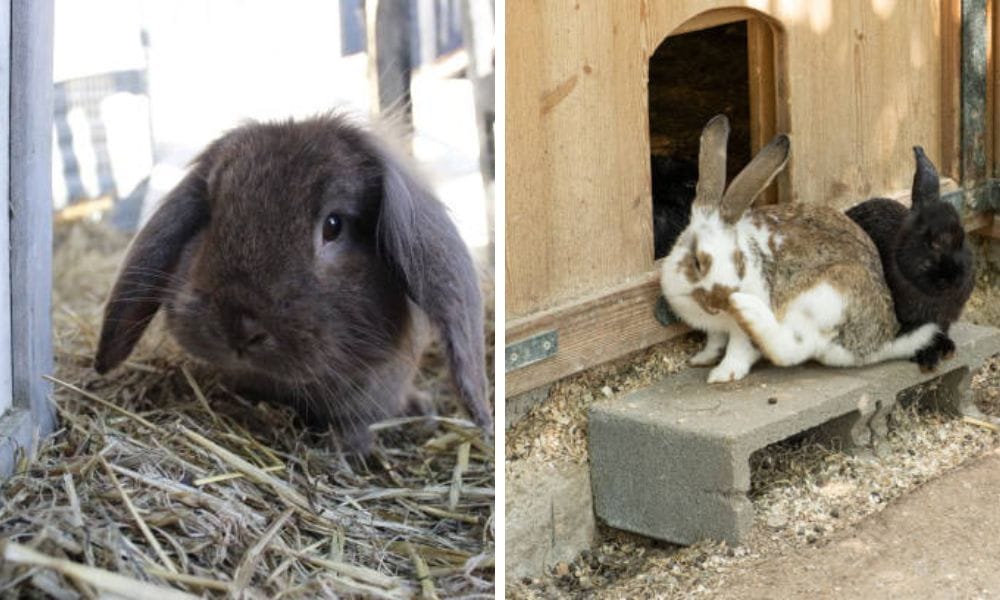
FAQ Section
Q: How often should I clean my rabbit hay feeder? A: It’s best to clean your rabbit hay feeder at least once a week to prevent mold and bacteria growth. However, you should check daily for any soiled hay and remove it promptly. Rabbits spend a significant amount of time on natural grazing behaviors, so providing food in a scattered manner can help them forage more naturally.
Q: Can I use any type of hay in my rabbit’s hay feeder? A: While most types of hay are suitable for rabbits, timothy hay is often recommended due to its high fiber content and nutritional balance. Avoid using alfalfa hay for adult rabbits, as it’s too high in calcium and protein for their needs.
Q: Is it okay to only feed my rabbit hay from a hay feeder? A: Hay should be the bulk of your rabbit’s diet, but it’s also essential to provide a balanced diet that includes fresh vegetables and a small amount of pellets. Always ensure fresh water is available as well.
